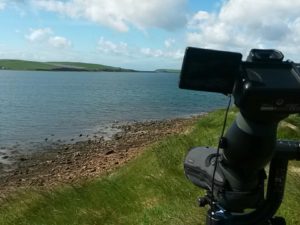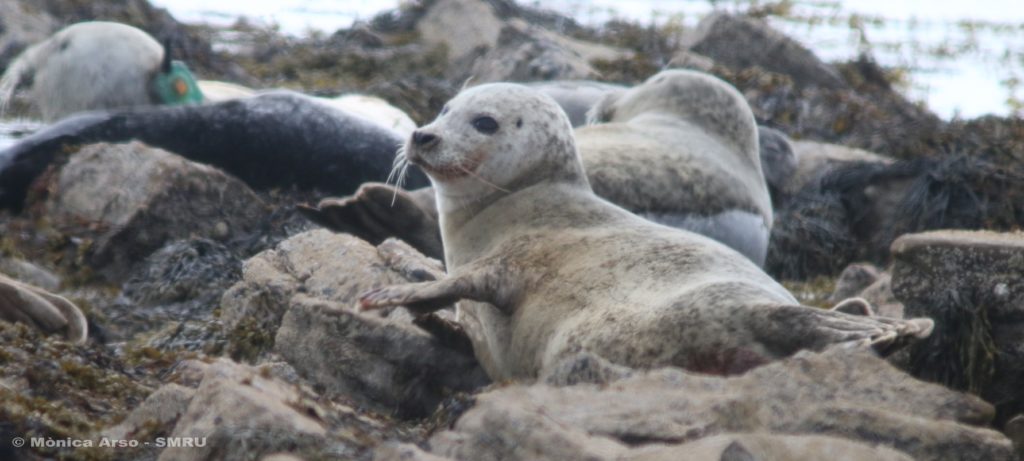
Pupping season is well underway in Orkney. Over the last few days, the number of both seals and pups has increased at the main haulouts, with less and less pregnant looking females and more tiny pups disturbing the quiet and peace of the haulout sites. Breeding season is a critical time in the life cycle of harbour seals, and so it is for us. One of the main objectives of the current project is to collect data on birth rates for harbour seals in areas where numbers of harbour seals are declining (such as Orkney) and in areas where the numbers have been stable or increasing (such as the West coast). During this time, we focus our effort at haulout sites that we know are used for pupping, and we try to visit them on a daily basis, weather permitting. So far, the weather in Orkney has allowed for almost daily visits to the selected haulout sites.

When collecting data, we photograph as many seals as possible, ideally taking photographs from both sides of the head. If we see any obvious signs of pregnancy we will take notes to later on link those to specific photographs taken. The same goes if we can see a pup with a seal, but maybe we cannot manage to photograph the pup properly because it is hiding behind mum.
The first pups were seen in Orkney last week, with the first one being born to one of the females we tagged earlier in April. Just a few days later, another of the seals we tagged in that trip gave birth to her pup. She was seen at the haulout for a few days with a massive belly and looking rather uncomfortable. She is female Or085, known from our catalogue from last year. This female had spent the last few weeks, since she was tagged on 30th of April 2016, traveling and foraging around Scapa Flow, before returning to Burray to pup.




Births are a fairly quick business in harbour seals. When close to giving birth, seals can be observed changing position frequently, rather than resting still for long periods. Contractions can be observed and normally the birth will not be far from that point in time. Studies in Atlantic harbour seals near Newfoundland showed that the mean time from the onset of obvious contractions to birth was 3.5 minutes, with a minimum of 38 seconds and a maximum of 21 minutes (Lawson and Renouf 1985). That study also showed how newborn pups were very active, immediately trying to crawl and touch nearby objects. New mums can be seen making many nose-to-nose contacts.
Yesterday I missed the birth of two pups right in front on my eyes. The fact that the haulout-site is located in a rocky and weedy shore does not help, as I do not have full view of all the hiding places. When I arrived at the haulout I distinguished a seal with remaining of blood in her genital area as well as the face and flippers. After a while I distinguished a tiny pup behind her, who must just have been born.

Another seal kept moving further away from the water’s edge, and finally settled in a spot among the seaweed covered rocks. I photographed this seal the day before, when I noted she was massively pregnant. A while after, I saw there was more movement and suddenly a little head showed up! By then the female was busy checking on the pup while moving in circles to force the placenta out, check the video below! It did not take long for a group of great black-backed gulls to show up and take an opportunity to take advantage of the placenta. The pup was actively moving around, and the female kept on checking on it, while scaring off the group of seagulls. By the end of my watch the pup was suckling, and as the tide came in mum and pup went into the water. I will keep my eyes peeled today to see if I can photograph the pair again.


Post written by Mònica
